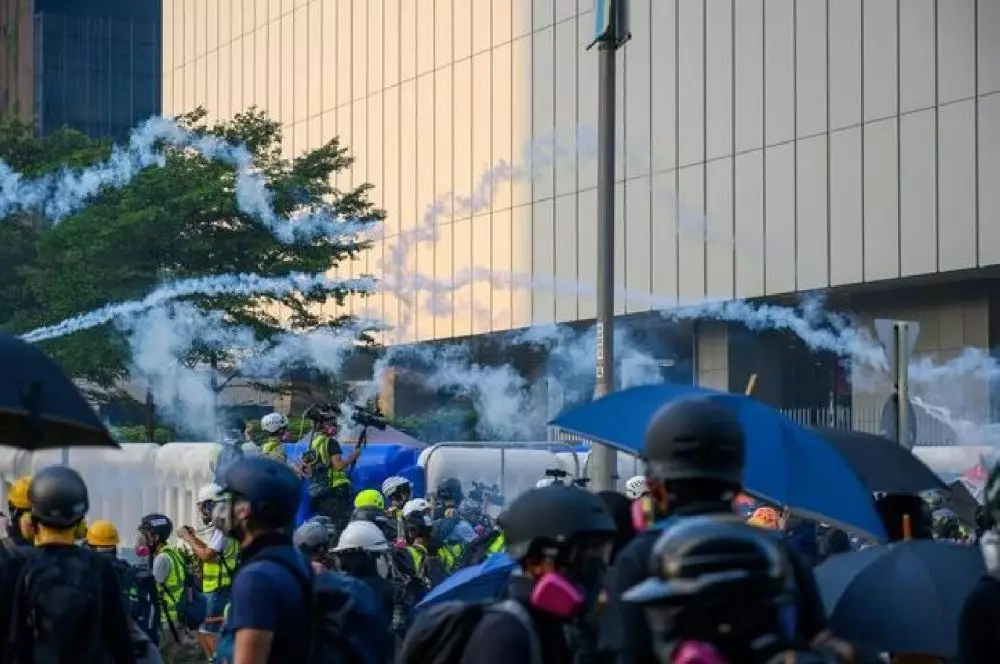foto: freepik.com
Brilio.net - Recently, a wave of protests has hit Indonesia again after the DPR annulled the Constitutional Court's (MK) decision regarding the 2024 Pilkada regulations. This policy has triggered strong reactions from various levels of society who took to the streets to express their dissatisfaction. In addition to Jakarta, protests also took place in Semarang, where masses consisting of residents and students gathered to voice their aspirations in front of the Central Java DPRD building.
However, the situation heated up when police fired tear gas into the crowd. The moment was recorded in a video shared by the X account @GUSDURians on Thursday (8/22). The use of tear gas is often used by authorities to disperse crowds.
However, these tear gas shots can trigger concerns about the health impacts caused. This is because exposure to chemicals from tear gas can cause various serious health problems. Tear gas is a chemical compound designed to irritate the mucous membranes in the eyes, nose, mouth, and lungs.
The side effects of tear gas exposure can vary, depending on the duration of exposure and the individual's sensitivity to the substance. Summarized by brilio.net from various sources on Thursday (22/8), here are some of the main side effects after being exposed to tear gas, based on medical findings and health research.

photo: freepik.com
1. Eye irritation and temporary blindness.The most immediate effect felt after being exposed to tear gas is eye irritation. This gas triggers an intense stinging and burning sensation in the eyes, causing excessive tearing. In some cases, exposure to tear gas can also cause temporary blindness.
People exposed to tear gas are usually very sensitive to light and may experience blurred vision. According to the World Health Organization (WHO), these effects usually subside after a few minutes to a few hours, but severe exposure may require further medical attention.
2. Difficulty breathing and coughing.Tear gas can also irritate the airways, causing shortness of breath and often accompanied by severe coughing. For those with respiratory conditions such as asthma or bronchitis, exposure to tear gas can worsen symptoms and trigger a more serious attack. According to the American Academy of Ophthalmology, tear gas can cause bronchospasm, which is a sudden constriction of the muscles in the walls of the bronchi that makes breathing more difficult.
3. Skin irritation.Tear gas exposure not only affects the eyes and respiratory system, but can also cause skin irritation. This chemical can cause rashes, redness, and burning sensations on exposed skin. If you are sweating or have open wounds, the effects can be even worse. The Centers for Disease Control and Prevention (CDC) states that tear gas can cause contact dermatitis, which is an inflammation of the skin that occurs due to direct contact with an irritant.
4. Nausea and vomiting.In addition to the immediate physical effects on the eyes and respiratory tract, tear gas can also cause nausea and vomiting. This is because the chemicals in tear gas can irritate the mucous membranes in the stomach when inhaled, triggering a nausea reaction. If you are exposed to significant amounts, you may feel dizzy and lose your balance.
5. Psychological effects.In addition to physical effects, exposure to tear gas can also cause psychological effects. Panic, fear, and anxiety often accompany the physical symptoms that appear, especially if you are caught in the middle of a panicking crowd. In emergency situations like this, psychological effects can worsen physical symptoms, causing hyperventilation or even loss of consciousness.
How to deal with tear gas exposure

photo: freepik.com
If you are exposed to tear gas, it is important to remain calm and immediately take the following steps to minimize side effects:
1. Immediately move away from the gas source.The first thing you should do is move away from the source of the tear gas immediately. Moving to higher ground and getting out of the wind can help reduce further exposure. Avoid rubbing your eyes or face, as this can worsen the irritation.
2. Wash eyes with clean water.Immediately flush your eyes with clean water for several minutes to remove any remaining tear gas. Use running water and do not use soap or other chemicals that can worsen irritation. According to the Mayo Clinic, rinsing your eyes with saline solution or artificial tears can help reduce the stinging sensation and prevent further damage.
3. Change clothes and take a shower.Once you have successfully moved away from the area exposed to tear gas, immediately change your clothes, because the gas can stick to the fibers of the fabric and continue to irritate the skin. Taking a shower with cool water and mild soap can also help remove chemicals that stick to the skin.
4. Use a mask and protective glasses.If you must remain in an area where you are at risk of tear gas exposure, be sure to wear a mask and goggles. The mask will help protect your respiratory tract, while the goggles can protect your eyes from further irritation.
5. Consult with medical personnel.If your symptoms do not improve or worsen, consult a medical professional immediately. They can provide further treatment such as eye drops, inhalers, or other medications that are appropriate for your condition.
Tear gas exposure can be a very unpleasant experience, but with the right knowledge of the side effects and how to deal with it, you can protect yourself and help those around you. Stay alert and always put your safety first in any emergency situation.
(brl/mal)